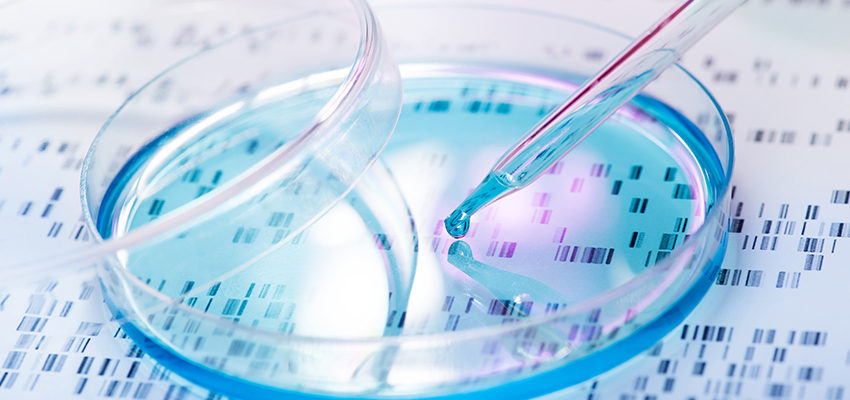Genotyping vs. Sequencing: What’s the Difference?

Here at Orig3n we’re focused on advancing the future of personal care. Our DNA tests are empowering people to use their genetic information to make more informed decisions in their daily lives. Join us as we explain how science and technology come together to create a revolution in self-care.
We’re all inherently interested in what our DNA may be able to tell us about ourselves, but do you really know how your DNA is analyzed after your swab arrives at Orig3n’s lab? Read on to learn the difference between genotyping and sequencing, and discover how we decode your DNA here at Orig3n.
But first…
What is DNA?
DNA (deoxyribonucleic acid) is the genetic material found in each of your cells, and is made up of molecules called nucleotides that provide the instructions an organism needs to develop, live, and reproduce. The sequence of your nucleotides (also known as base pairs) creates a “code” that in turn forms the blueprint of you.
DNA tests help crack that code, offering you personalized insights into your genetic blueprint that can empower you to make choices that may improve your lifestyle. There are two main ways to analyze DNA: genotyping and sequencing. As a comparison, imagine reading a book. Genotyping highlights specific chapters while sequencing is comparable to reading the entire book.
What is genotyping?
Genotyping is used to determine which specific genetic variants an individual possesses. To do this, scientists in the lab look for information at a specific place in your DNA (known as genotyping chips or SNPs) where they know important data will be. By targeting these hyper-focused sections of your DNA, scientists can efficiently and effectively gain insight into an array of different gene variants that an individual possesses.
What is sequencing?
Sequencing is used to determine the exact order of your DNA base pairs. Using sequencing, scientists can either look at a specific portion of DNA (known as your “exome”) or at the entire sequence (known as your “genome”). Unlike genotyping, sequencing does not require prior identification of SNPs or genotyping chips. As a result, sequencing can be used to identify your known genetic variants, as well as new variants that may be unique to a specific individual.
While sequencing offers fascinating insights, the relative newness of the technique has limited its use in market, as it is still relatively costly and time-consuming. For context, it took the Human Genome Project nearly 10 years to successfully map the entire human genome for only a few individuals! While the process is getting faster each and every day, it is still more time consuming than genotyping.
Behind the Science: How Orig3n Decodes Your DNA
Here at Orig3n, we use genotyping to analyze your DNA. By using this technique we’re able to keep our tests affordable, enabling everyone to gain access to their genetic information and make more empowered decisions — which is what we’re focused on each and every day.
Take the first step towards your future by exploring our suite of lifestyle DNA tests and learn more about our mission to create a better tomorrow.
Learn more about our DNA testing process …
Whether you’ve already purchased a DNA test or you’re thinking about exploring your options, learn what happens to your DNA test sample once you send your swab back to our Orig3n lab with our article, In the Lab: Where Does My DNA Test Sample Go?
Already have your results?
Learn how to put your DNA results into action! Check out our article, 4 Ways to Make the Most of Your Orig3n DNA Test.
Keep in touch!
Stay in the know on everything Orig3n — including both our DNA tests and regenerative medicine research — by subscribing to our email list. Simply scroll to the bottom of our homepage and enter your email.